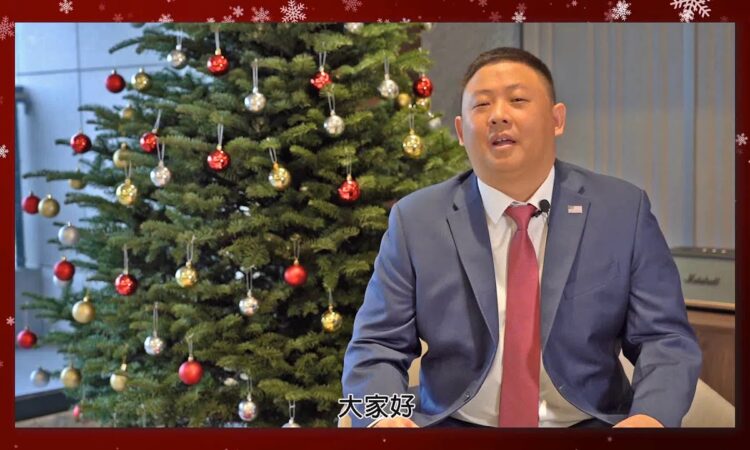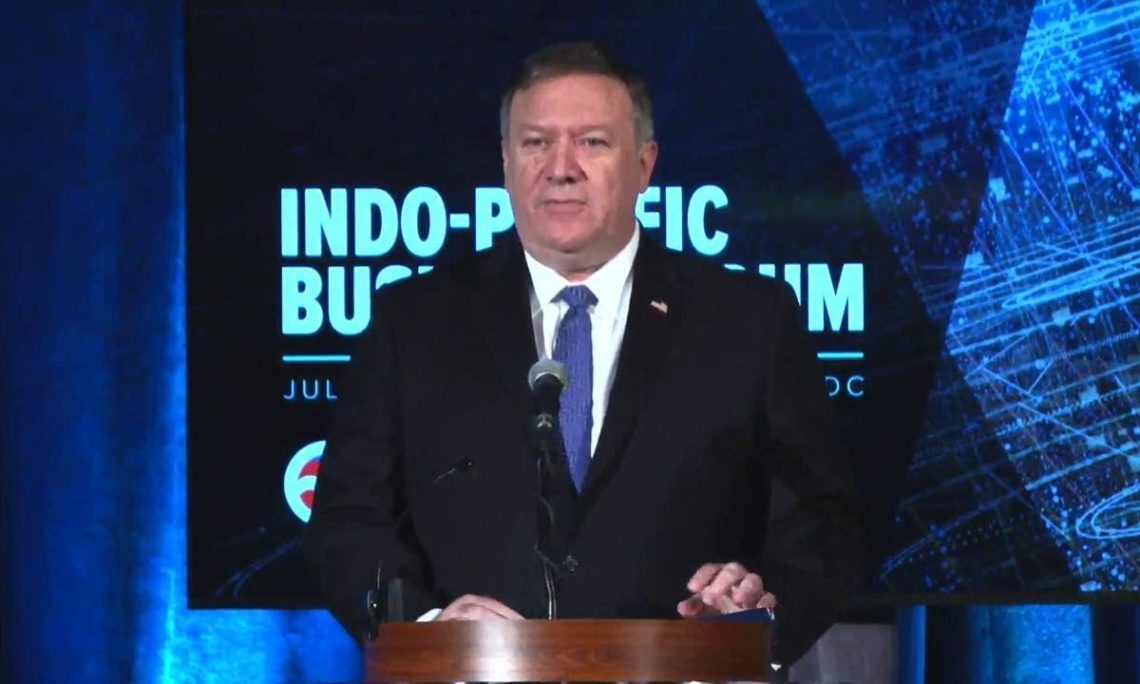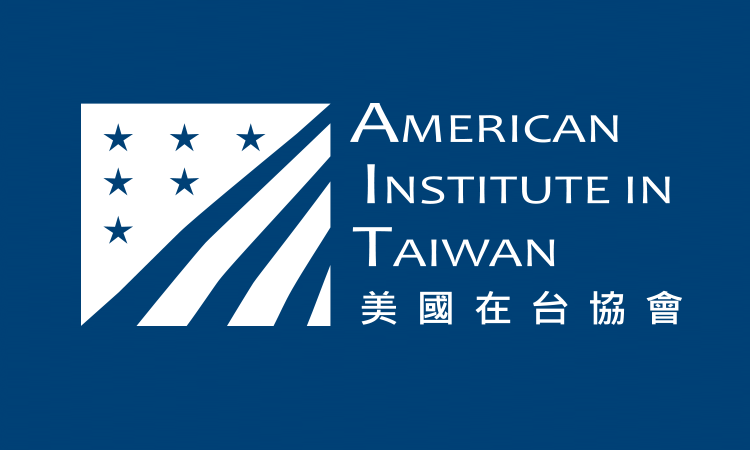Remarks
Michael R. Pompeo
Secretary of State
Indo-Pacific Business Forum
U.S. Chamber of Commerce
Washington, DC
July 30, 2018
Remarks on “America’s Indo-Pacific Economic Vision” at Indo-Pacific Business Forum
SECRETARY POMPEO: Good morning, everyone. It’s great to be with you. Thank you, Tom, for the kind introduction. Thanks to the U.S. Chamber of Commerce for having me here and hosting this important Indo-Pacific Business Forum as well. I’m glad to see, too, many American business leaders with us here today. I did this for a long time – people forget that’s what I did for a living before I lost my mind and ran for Congress.
I know there’s also folks from State Department here and from the administration. I also see a number of ambassadors for – that are stationed here and those from foreign capitals. Thank you all for being here and for partnering with the United States and our businesses as we pursue prosperity for all people across the world.
I also want to thank my colleagues Secretary Ross, Secretary Perry, Administrator Green, Ambassador Gerrish, Ray Washburne, too, at OPIC, a good friend of mine from my business days. Your president helps – your presence helps solidify our economic approach to the Indo-Pacific as a truly whole-of-government mission.
I wanted to come here this morning to talk about the Trump administration’s strategy for advancing a free and open Indo-Pacific, and why U.S. business engagement is at the center of it – it’s a staple of our mission to promote peace, stability, and prosperity.
President Trump first outlined his vision for a free and open Indo-Pacific at the APEC CEO Summit in Vietnam just last year. The National Security Strategy also detailed that vision. Make no mistake, the Indo-Pacific, which stretches from the United States west coast to the west coast of India, is a subject of great importance to American foreign policy. As I will detail in a bit, this region is one of the greatest engines of future global – of the future global economy, and it already is today. And the American people and the whole world have a stake in the Indo-Pacific’s peace and prosperity. It’s why the Indo-Pacific must be free and open.
And for those of you who might not be familiar with our terminology of “free and open,” I want to just spend a minute talking about what it is this administration means when it uses that language.
When we say “free” Indo-Pacific, it means we all want all nations, every nation, to be able to protect their sovereignty from coercion by other countries. At the national level, “free” means good governance and the assurance that citizens can enjoy their fundamental rights and liberties.
When we say “open” in the Indo-Pacific, it means we want all nations to enjoy open access to seas and airways. We want the peaceful resolution of territorial and maritime disputes. This is key for international peace and for each country’s attainment of its own national aims.
Economically, “open” means fair and reciprocal trade, open investment environments, transparent agreements between nations, and improved connectivity to drive regional ties – because these are the paths for sustainable growth in the region.
The U.S. commitment to a free and open Indo-Pacific is deeply rooted. The State Department, which I represent, established a consular presence in Kolkata – then called Calcutta – in 1794.
American entrepreneurs, whom most of you in this room represent, have been trading and investing in the Indo-Pacific even longer than that. And I won’t give you a full history today, but I will note how the United States has played a foundational role in enabling the growth, development, and wealth we see across the entire Indo-Pacific today.
The great theme of our engagement is this: Where America goes, we seek partnership, not domination. After World War II we worked with Japan to forge a great alliance and stimulate an economic boom. South Korea in the ‘50s was ravaged by conflict. American assistance and investment in railways, ports, and other infrastructure helped create a foundation for our South Korean friends to recover, thrive, and build one of the world’s most prosperous economies – one that is now strong enough to aid other countries in their development.
In the ‘60s, we grew partnerships to address basic developmental needs. We supported transformational agricultural efforts, such as the Green Revolution, which forever improved farming of wheat and rice worldwide – and nowhere more than in the Indo-Pacific. We helped Hong Kong, Singapore, and other Southeast Asian economies rise from the ‘70s onward. In Taiwan, economic development went hand-in-hand with creating an open, democratic society that blossomed into a high-tech powerhouse. And America was proud to support foundational institutions like ASEAN, APEC, and the Asian Development Bank, among others.
Thanks to this history of economic and commercial engagements, America’s relationships throughout the Indo-Pacific today are characterized by mutual trust and respect. American friendship is welcomed, and American businesses are recognized for their ingenuity, their reliability, and their honesty.
Today no country does more two-way trade in the Indo-Pacific than the United States. In Southeast Asia, the U.S. is the single largest source of cumulative foreign investment – larger than China, Japan and the European Union.
Open a map of the Indo-Pacific today, and it is dotted with U.S. public and private efforts to foster self-reliance, build institutions, and promote private sector growth.
In the Philippines, Dallas-based Texas Instruments opened a factory in 1979 that helped the country turn into a crucial part of the global semiconductor supply chain. In Malaysia, General Electric first invested in a sales and service center in 1975. Today GE has over 1,300 employees in the country, from Kuala Lumpur to Sarawak. With Malaysians recently having elected a new government, I want them and their leaders to know that America stands ready, as we always do for partners around the region, to deepen commercial, government, people-to-people ties – all based on our shared democratic values. I’ll travel there in the week ahead.
Chevron was the first company ever granted oil-exploration rights in Thailand, and in 1973 it discovered the first hydrocarbons in Thai waters. This gave birth to a major local industry. Today Chevron is Thailand’s top natural gas and crude oil producer, and its investments support more than 200,000 jobs. Meanwhile, Chevron’s “Enjoy Science Project” trains local teachers in science, technology, engineering, and math to strengthen Thailand’s intellectual capital and help Chevron make greater returns on its investment. Chevron’s Thailand unit even provided equipment and technical advice for the recent rescue of those courageous boys and their coach who were trapped in a flooded cave.
U.S. companies literally help Indo-Pacific partner nations reach for the stars. SpaceX, one of America’s most innovative firms, recently launched Bangladesh’s first-ever indigenous communications satellite.
Now, to be clear, the U.S. Government doesn’t tell American companies what to do. But we help build environments that foster good, productive capitalism. We help American firms succeed so that local communities can flourish, and bilateral partnerships can grow.
That’s why the United States supports educational efforts such as Fulbright University Vietnam and the Young Southeast Asian Leaders Initiative. This is the same kind of commitment we showed in the past when we helped establish the first Indian Institute of Technology, along with 14 regional engineering colleges and eight agricultural universities all across India.
Development finance is also important. Our Overseas Private Investment Corporation has a portfolio of 3.9 billion invested in the Indo-Pacific alongside American firms in industries from energy to healthcare to banking. For every dollar that OPIC has invested, the private sector has invested $2.76. In Indonesia, OPIC has teamed up with USAID and Colorado-based UPC Renewables to develop the country’s first utility-scale wind farm, to provide clean, affordable, reliable power to 70,000 Indonesian households.
And our Millennium Challenge Corporation has granted $2.1 billion since 2004 to promote development and good governance in Indo-Pacific nations. Right now MCC is spending 500 million to build hundreds of kilometers of electricity transmission lines in Nepal and realize that country’s energy potential.
And today, at this Indo-Pacific Business Forum, I am proud to announce that MCC has signed a $350 million compact with the Government of Mongolia to develop new, long-term sources of water supply. In addition to helping Mongolia fulfill a critical human need, this will position the country to attract new investment and stimulate private sector-led growth. I know that the Mongolian foreign minister had intended to be here today, but he was unfortunately called away for business.
This MCC program will benefit both Mongolia, the region, and the world.
I could go on much longer and give you more examples. American companies have been a force for prosperity and good throughout the Indo-Pacific region. Our good faith as a partner is evident in our support of economic development that honors local autonomy and national sovereignty. The United States does not invest for political influence, but rather practices partnership economics.
The successes of the past and present are just a prelude to what I expect will come in the future. I am here to say emphatically that the Trump administration is committed to expanding our economic engagement in the Indo-Pacific region. We seek to capitalize on opportunities in accordance with the principles of freedom and openness.
As President Trump said in Vietnam last year, the Indo-Pacific is “a beautiful constellation of nations, each its own bright star, satellites to none – and each one a people, a culture, a way of life, a home.” To burn the brightest, this constellation needs the fuel of innovation and sustainable growth. This is what our Indo-Pacific strategy will promote. We believe in strategic partnerships, not strategic dependency.
As President Trump said last year, “We want you to be strong, prosperous, and self-reliant, rooted in your history, and reaching out toward the future.” Today I echo that message. I speak for President Trump when I say every nation and business can have confidence that the United States will continue to create the conditions for mutual prosperity in a free and open Indo-Pacific.
It is clearly in America’s strategic interest to deepen engagement in the region. More than one-third of the global population is there. Four of the world’s six largest economies are there as well, in China, Japan, and India – and of course, the United States. The ten countries of the ASEAN community are the fastest-growing economic zone in the world and are major buyers of U.S. products. President Trump will strike while the iron is hot, because there are clear economic benefits at hand for the American people.
Our Indo-Pacific vision excludes no nation. We seek to work with anyone to promote a free and open Indo-Pacific, so long as that cooperation adheres to the highest standards that our citizens demand. The United States is committed to growing our presence in the region because we want Americans and all people of the Indo-Pacific to share in the economic growth of 2020, 2030, 2040, and beyond.
I know some are wondering about America’s role in the region in light of President Trump’s decision to pull out of TPP. While we work with our partners to craft better and higher-standard bilateral trade agreements, our companies are continuing to advance U.S. economic interests by growing their presence in the region. For example, the number of U.S. companies in Singapore has increased 10% over just the past two years.
Finally, we remain committed to economic engagement in the Indo-Pacific because of the national security benefits for the American people and our partners. As President Trump’s National Security Strategy states, “Economic security is national security.”
It’s clear a big part of America’s international economic future is in this region. So just as the United States made foundational contributions in the past, today I am announcing $113 million in new U.S. initiatives to support foundational areas of the future: digital economy, energy, and infrastructure. These funds represent just a down payment on a new era in U.S. economic commitment to peace and prosperity in the Indo-Pacific region.
Our strategy seeks to catalyze American businesses to do what they do best. President Trump also expects our commitment to generate greater support for a free and open Indo-Pacific from all countries that share our vision of a region rooted in sovereignty, the rule of law, and sustainable prosperity.
The first initiative is the Digital Connectivity and Cybersecurity Partnership. This will start with a $25 million dollar initial investment to improve partner countries’ digital connectivity and expand opportunities for U.S. technology exports. The U.S. will support communications infrastructure development through technical assistance and public-private partnerships; promote market-driven digital regulatory policies; and build partners’ cybersecurity capacity to address common threats. We do this because we recognize the tremendous economic and social benefits that come with an open, secure, and reliable internet.
The second initiative is called Asia EDGE. It stands for Enhancing Development and Growth through Energy. Energy is of course the lifeblood of a modern economy. Through Asia EDGE, we will invest nearly $50 million this year alone to help Indo-Pacific partners import, produce, move, store, and deploy their energy resources. America’s energy bounty includes vast natural resources, world-leading private firms, sophisticated development-financial tools, and peerless technical expertise. We will draw on all of these to grow sustainable and secure energy markets throughout the Indo-Pacific.
Third, next, infrastructure. The United States is committed to connectivity that advances national sovereignty, regional integration, and trust. This occurs when infrastructure is physically secure, financially viable, and socially responsible.
So today the U.S. is launching an Infrastructure Transaction and Assistance Network to boost the development of infrastructure done right. This whole-of-government initiative, seeded with nearly $30 million dollars, establishes a new interagency body to coordinate, strengthen, and share U.S. tools for project scouting, financing, and technical assistance. It also establishes a new Indo-Pacific Transaction Advisory Fund to help partners access private legal and financial advisory services.
In each of these areas – digital economy, energy, and infrastructure – we look forward to working with allies and partners. We also look forward to leveraging the new and modernized tools and improved programming from the BUILD Act that recently passed the House and is now before the Senate. This is a big one. Under the House bill, the U.S. government’s development finance capacity would more than double to $60 billion dollars.
Let me say another word about money. President Trump – and I know most of you in this room don’t like to waste a single penny – and this investment is not waste. Nor is it about giving money away. This is a strategic investment in the most competitive part of the world for years to come.
We are proud to support the BUILD Act, and to allocate $113 million dollars in immediate new funds to expand economic engagement in the Indo-Pacific. Later this week, I will make further announcements on security assistance.
But we also know government spending alone can never address the Indo-Pacific’s needs. According to the Asian Development Bank, developing countries in the region will need $26 trillion for infrastructure by the year 2030. No government nor combination of governments has that kind of money. Only the private sector does. And only if countries make themselves welcoming to private investment will those trillions of dollars get off the sidelines, into their economies, and into productive enterprises that bring jobs and prosperity to their peoples. For that to happen, Indo-Pacific leaders must prioritize transparency, anti-corruption, and responsible financing.
The U.S. government’s Indo-Pacific initiatives will be shaped by these values and buttressed by partnerships with American companies. This will reflect American values in the high standards, transparency, and adherence to the rule of law.
With American companies, citizens around the world know that what you see is what you get: honest contracts, honest terms, and no need for off-the-books mischief. Integrity in business practices is an essential pillar of our Indo-Pacific economic vision, and it is what each country in the region needs.
As I close today I want everyone to understand something: this is a commitment. I personally pledge as the Secretary of State that I will engage with you. I will engage with Congress and our foreign counterparts. So will our Ambassadors and other U.S. officials. I was delighted to make my first trip to Vietnam a few weeks ago, and there will be many more trips to the region even yet this year.
One such trip starts on Wednesday of this week. I will travel to Malaysia, to Singapore, and then on to Indonesia for the weekend. I look forward to discussing everything that I’ve shared with you today with political and business leaders in the region. ASEAN is literally at the center of the Indo-Pacific, and it plays a central role in the Indo-Pacific vision that America is presenting. This is one reason that out of the $113 million will come a package of U.S. support for important regional institutions, like ASEAN and our ASEAN Connect initiative, APEC, the Lower Mekong Initiative, and the Indian Ocean Rim Association. More on that later this week.
The Trump administration has a clear vision for the Indo-Pacific in the 21st century. It is an American vision that is deeply engaged in the region’s economic, political, cultural, and security affairs. Like so many of our Asian allies and friends, our country fought for its own independence from an empire that expected deference. We thus have never and will never seek domination in the Indo-Pacific, and we will oppose any country that does.
Rather, we aspire to a regional order, independent nations that can defend their people and compete fairly in the international marketplace. We stand ready to enhance the security of our partners and to assist them in developing their economies and societies in ways that ensure human dignity. We will help them. We will help them keep their people free from coercion or great power domination.
And today I want to close by inviting any nation and any business that wants those values enshrined in this region to partner with the United States Government. A free and open Indo-Pacific is America’s chosen course – and we hope that it will be yours too. Thank you, God bless you, and have a great day. (Applause.)


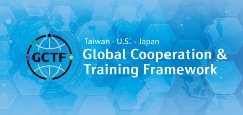




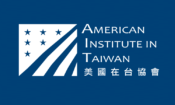
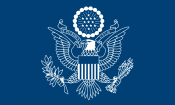
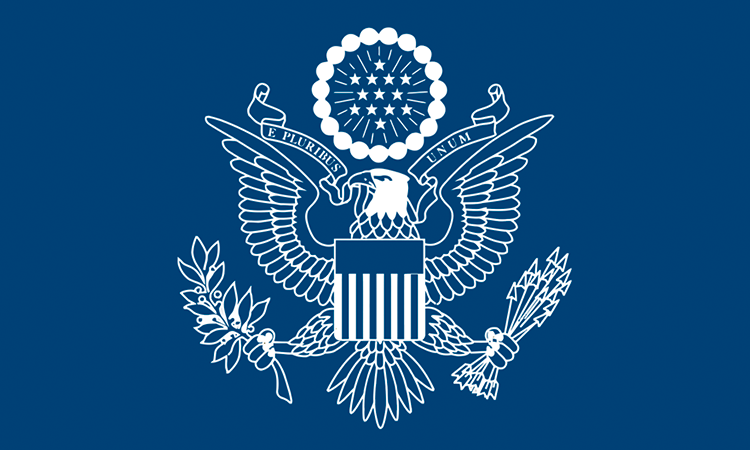
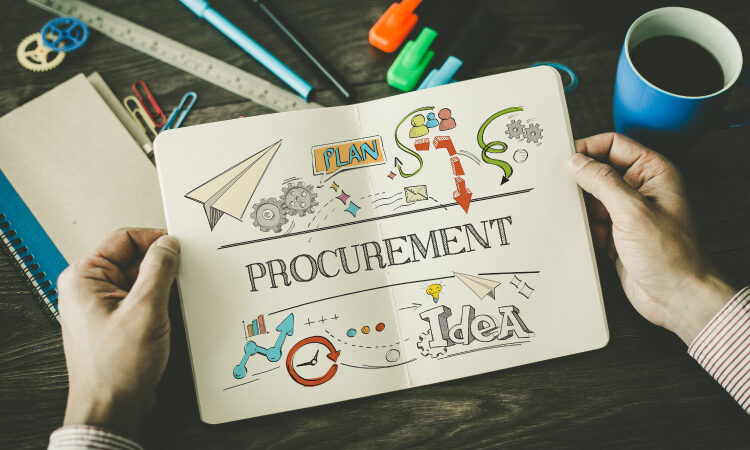




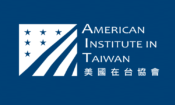
![Video Thumbnail [Recovered]-01](../wp-content/uploads/sites/269/Video-Thumbnail-Recovered-01-1-750x450.jpg)
